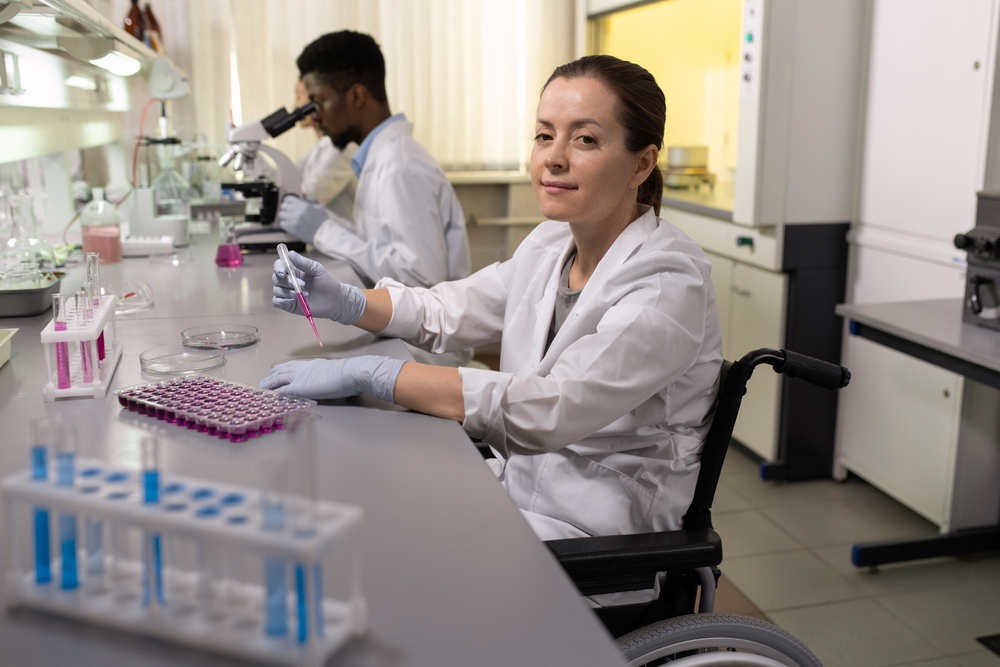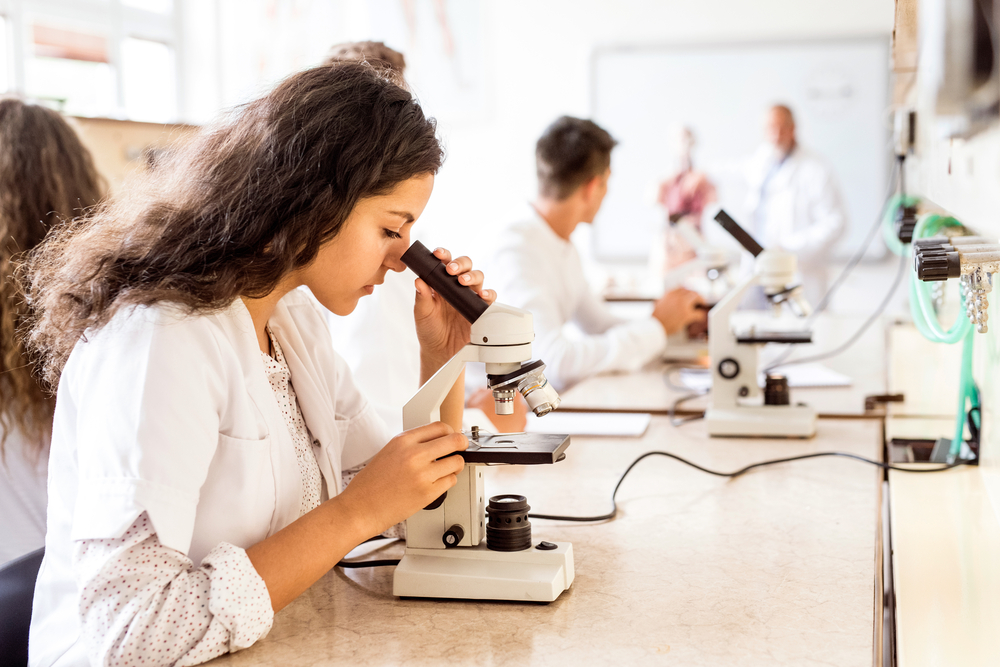
In the rapidly evolving landscape of education, the design and functionality of school laboratories play a pivotal role in shaping the learning experience of students. As we propel further into the 21st century, modern school lab design has transformed the traditional notion of a school lab into a dynamic space that integrates cutting-edge technology, fosters collaboration, and inspires innovation.
This article delves into the essential elements that contribute to the creation of an engaging and functional 21st-century school lab. From flexible layouts to advanced technology integration, we explore the key considerations that elevate these spaces into hubs of creativity and exploration, preparing students for the challenges of our ever-evolving world.
The Evolution of School Laboratories
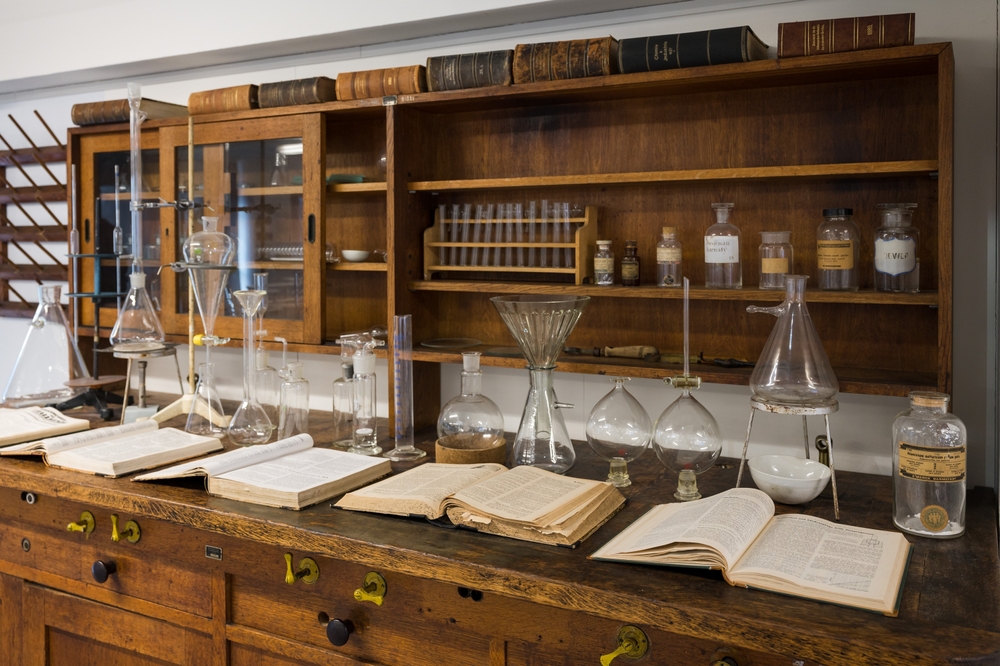
Over the years, school science labs have undergone a significant transformation from traditional spaces led by science teachers to dynamic environments fostering inquiry-based learning and the integration of technology.
Initially centered around prescribed experiments and teacher-led demonstrations, labs have evolved to embrace hands-on experimentation, digital tools, and virtual labs beyond the realm of science education. The adoption of a STEAM approach has seen science labs becoming hubs for interdisciplinary projects, blending science with arts and design.
Based on education research, the focus has shifted towards developing 21st-century skills, emphasizing critical thinking, problem-solving, and collaboration. Environmental sustainability has gained prominence in lab practices, reflecting a broader awareness of global challenges.
Concurrently, teacher roles have shifted from traditional instructors to facilitators of inquiry, guiding students through the scientific process. Teachers now integrate technology, promote digital literacy, and actively engage in continuous professional development. They have become advocates for 21st-century skills, emphasizing project-based learning and adaptability.
Community engagement and mentorship play an increasing role as teachers collaborate with industry professionals, bringing real-world experiences into the classroom.
Overall, the evolution of school science labs and teacher roles mirrors a holistic shift towards challenge-based learning (CBL) with student-centered, experiential, and interdisciplinary education in the 21st century.
Designing an Engaging and Functional School Lab
Designing an engaging and functional school lab involves careful consideration of various elements to create a space that promotes learning, creativity, and safety. Here are some key aspects to focus on:
1. Layout and Space Planning
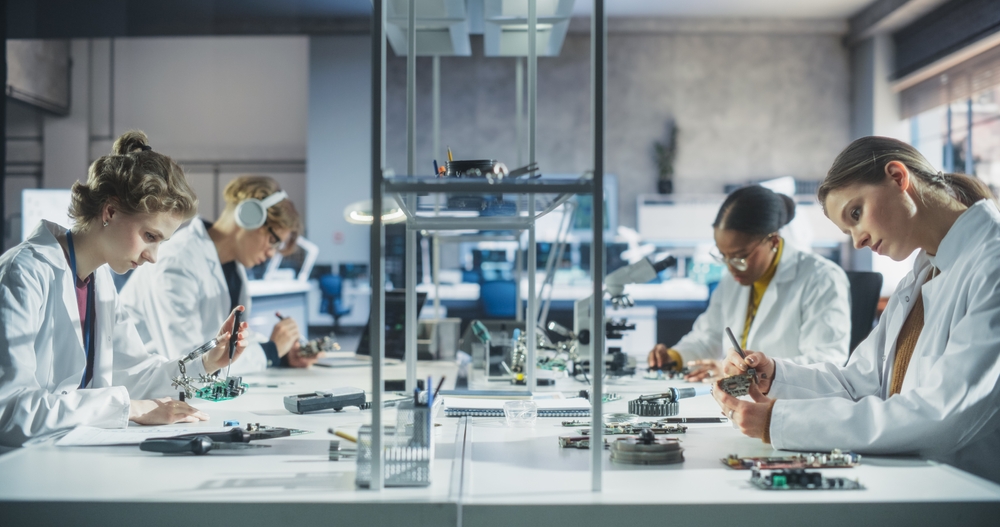
The first step in school lab design is to consider the available space and the number of students per class.
- Will the space be for a lab only or a combination of lab and classroom?
- Next is the number and types of workstations to include in the design, and how they will be laid out. Will they be movable or fixed?
- How will learners use the lab? Will there be group work, and if so, will it be large or small groups? Or are students to work in pairs or individually?
- What science disciplines will be taught in the lab space?
Note that due to the chemicals used, chemistry labs require more safety elements like fume hoods and eye wash stations than physics labs.
2. Safety Measures
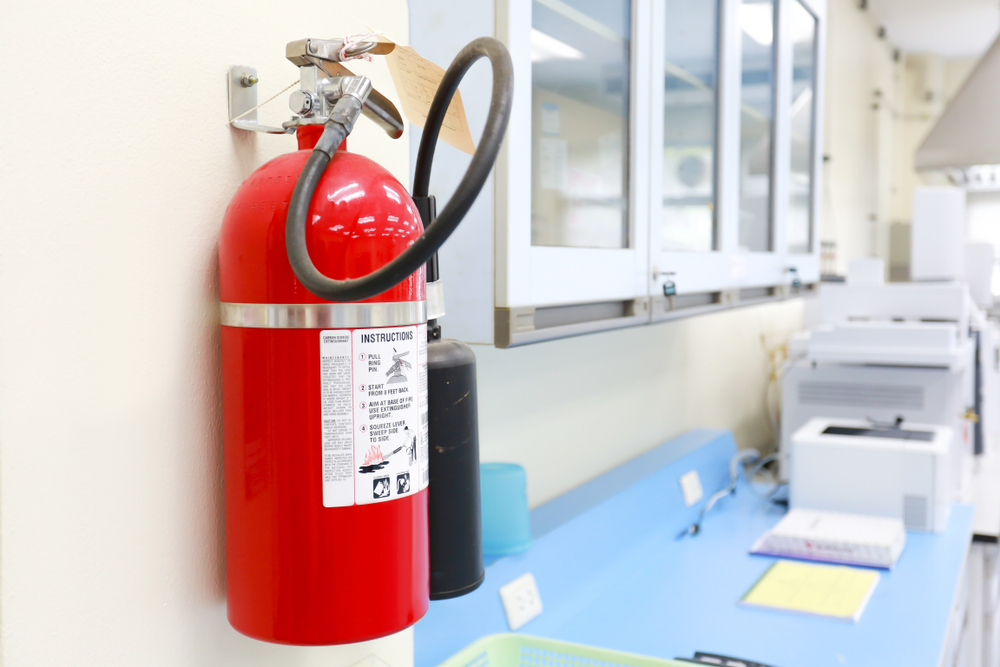
Designing an engaging and functional school lab involves careful consideration of safety to create a conducive learning environment. Here are some safety considerations for school lab design:
1. Emergency Exits and Evacuation Routes:
- Ensure clear and accessible emergency exits.
- Mark evacuation routes prominently.
2. Emergency Equipment:
- Install fire extinguishers, first aid kits, emergency showers, and eyewash stations.
3. Chemical Storage:
- Store chemicals in properly labeled and secure containers.
- Keep incompatible chemicals separated.
- Provide a designated area for chemical storage with proper ventilation.
4. Electrical Safety:
- Ensure that electrical outlets and equipment meet safety standards.
5. Accessibility:
- Ensure that emergency procedures consider the needs of individuals with disabilities.
6. Personal Protective Equipment (PPE):
- Provide learners and teachers with appropriate PPE, such as goggles, gloves, and lab coats.
By addressing these safety considerations, you can create a learning space that promotes both engagement and functionality while prioritizing the well-being of students and staff.
3. Ergonomics and Accessibility
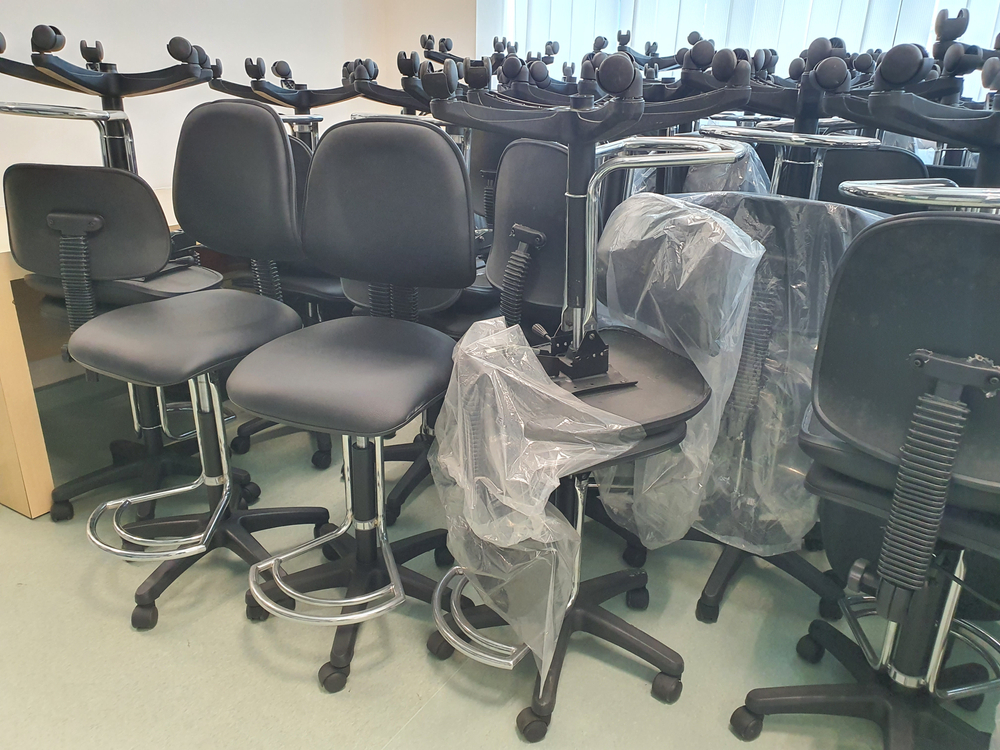
The school lab design process involves careful consideration of ergonomic and access factors to create an engaging and functional learning environment. Furniture, fixtures, and accessory choices are critical to give you a fully functional lab space. Consider the following:
1. Furniture and Layout:
- Choose ergonomic furniture that supports proper posture and comfort for students.
- Arrange furniture to facilitate easy movement and collaboration, ensuring a flexible and adaptable layout.
- Provide ample workspace for various activities, considering the different tasks students may need to perform.
2. Accessibility:
- Take into account the diverse needs of students, including those with disabilities or special requirements.
- Consider wheelchair accessibility, adjustable tables, and equipment that can be easily reached by all students.
- Incorporate universal design principles to create a space that is accessible and welcoming to everyone.
- Design workstations with clear pathways to accommodate students with mobility aids.
4. Technology Integration
The design of a modern school lab should not only focus on providing state-of-the-art equipment, but also incorporate pedagogies to ensure an interactive and engaging learning experience for students.
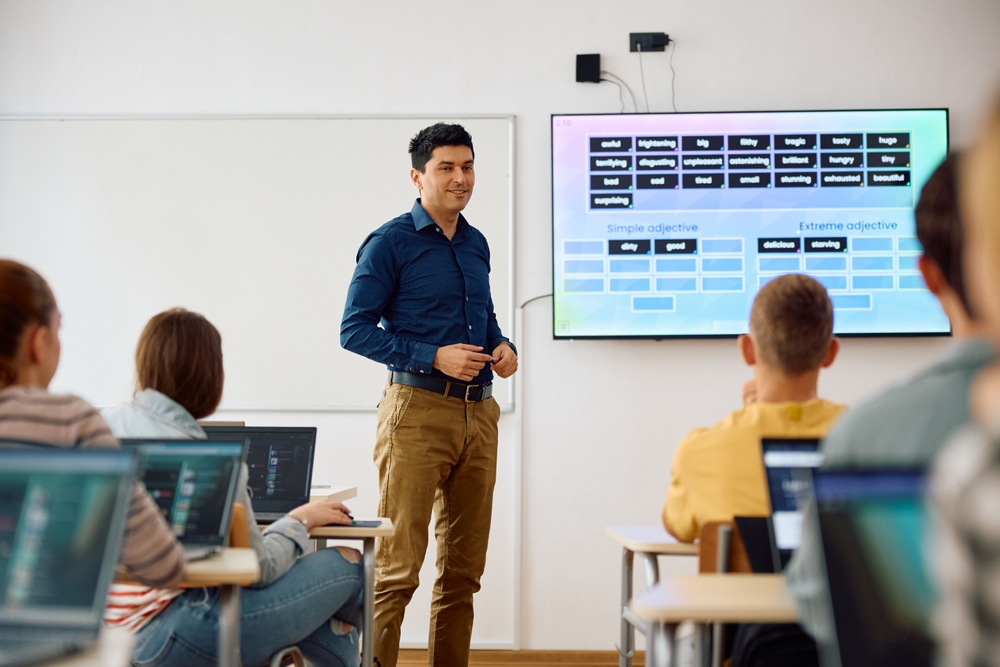
1. Interactive Displays
Interactive displays in a school lab can be utilized in various ways to enhance the learning experience and engage students. Here are several ways interactive displays can be used in a school lab:
- Virtual Simulations: Interactive displays can be used to run virtual simulations or experiments to explore concepts that may be difficult to replicate in a traditional lab setting.
- Collaborative Projects: Students can work together on projects, share their findings, and present their work using the interactive screen.
- Data Visualization: Displaying scientific data and graphs on interactive screens allows students to analyze and interpret information more effectively.
- Annotating Diagrams: This helps in explaining complex concepts, highlighting important details, and providing additional information during lectures.
- Digital Whiteboard: Transform the interactive display into a digital whiteboard where teachers and students can write, draw, and annotate.
- Interactive Quizzes and Games: Create interactive quizzes and educational games to increase student engagement and motivation.
- Demonstrations and Tutorials: Teachers can use interactive displays to demonstrate experiments or tutorials.
- Resource Access: Interactive displays can be connected to the internet, providing instant access to a wealth of educational resources.
- Remote Learning Integration: In situations where students learn remotely, interactive displays can be used for virtual classrooms.
By incorporating interactive displays into a school lab design, educators can create a more dynamic and engaging learning environment that aligns with modern teaching methods and technology.
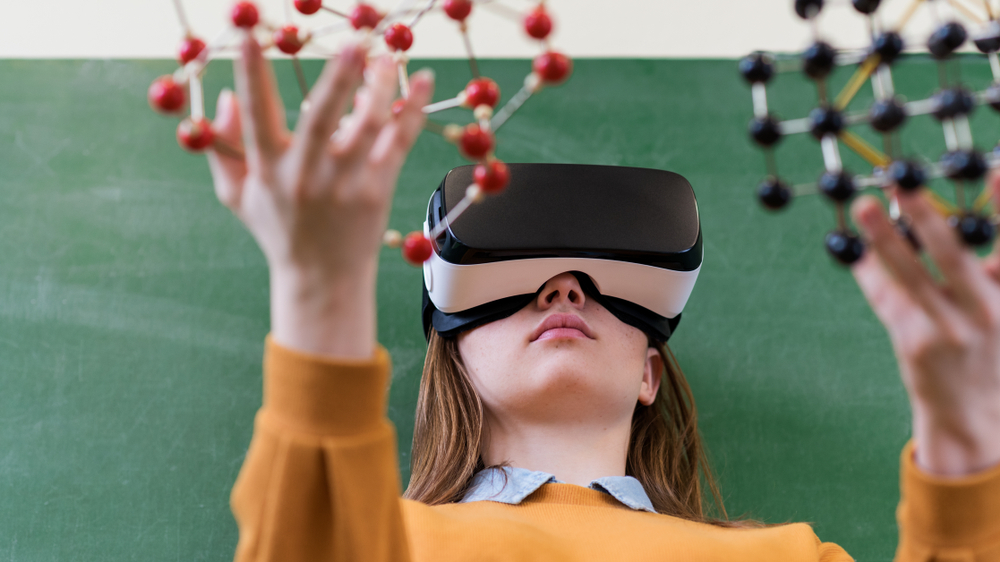
2. Virtual Reality (VR) Stations
A virtual reality laboratory is a designated area where students can explore virtual worlds and engage with digital objects in hands-on learning activities.
In a school lab design, a VR station typically comprises a room furnished with virtual reality headsets, controllers, and other essential equipment to enhance various educational experiences and engage students in immersive learning.
Here are several ways VR can be incorporated into a school lab setting:
- Science Simulations: VR can be used to create realistic simulations for experiments in physics, chemistry, biology, and other scientific disciplines.VR allows students to perform experiments in a virtual environment, promoting a hands-on learning experience without the need for physical materials.
- Anatomy and Dissection: In biology labs, VR can be employed to provide a detailed and interactive exploration of anatomy.Virtual dissections and 3D models can help students understand the human body in a more engaging way.
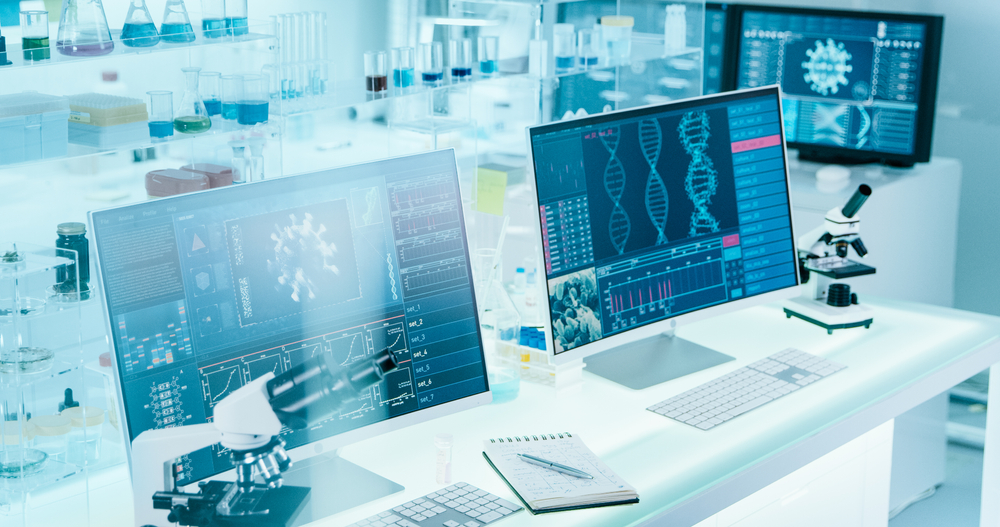
3. Digital workstations
Including digital workstations in a school lab design can provide various ways to enhance the learning experience. Here are some ways they can be used:
- Research and Information Gathering: Students can use digital workstations to access online resources, databases, and educational websites for research purposes.
- Collaborative Projects: Digital workstations facilitate collaboration among students. They can work on group projects, in partnership with fellow students, share files, and collaborate on documents using cloud-based platforms.
- Multimedia Creation: learners can use digital workstations to create multimedia presentations, videos, and interactive content to demonstrate their understanding of a subject.
- Data Analysis: When computers are interfaced with the lab equipment, data can be recorded quickly and efficiently. If the computers have data analysis software, students can get a deeper understanding and experience in graphing and otherwise analyzing the data.
5. Innovative Tools and Equipment
Including modern science equipment, such as tools and equipment like 3D printers and scanners, and other innovative tools and equipment in a school lab design can enhance practical learning experiences.

3D Printers and Scanners
Integrating 3D printers and scanners into a school lab prepares students for the technology-driven world by exposing them to modern manufacturing and design processes, allowing prototyping and hands-on experimentation.
- STEAM Education: 3D printing can be integrated into the STEAM (Science, Technology, Engineering, Art, and Mathematics) curriculum to reinforce theoretical concepts with practical applications.Students can print models of scientific phenomena, geometric shapes, or architectural structures.
Art students can use 3D printers to bring their digital or traditional designs into the physical realm.
- Biology and Anatomy: Biology classes can benefit from 3D-printed models of cells, organs, and other biological structures for a more interactive and tangible learning experience.Anatomy lessons can be enhanced with detailed 3D-printed models of the human body.
- Custom Educational Tools: Teachers can design and print custom educational tools, such as math manipulatives, models for physics experiments, or interactive learning aids.
- Problem-Solving: 3D printing encourages problem-solving skills as students face challenges related to design, calibration, and printing processes.
- Collaborative Projects: Learners can work on collaborative projects that involve designing, printing, and assembling components, fostering teamwork and communication skills.
- Robotics and Engineering Projects: 3D printing can be used to create parts for robotics projects or engineering challenges, allowing students to iterate and optimize their designs.
- Scan and Replicate: Scanners can be used to capture real-world objects, and the scanned data can be manipulated or printed for further analysis or examination.
6. Storage Solutions
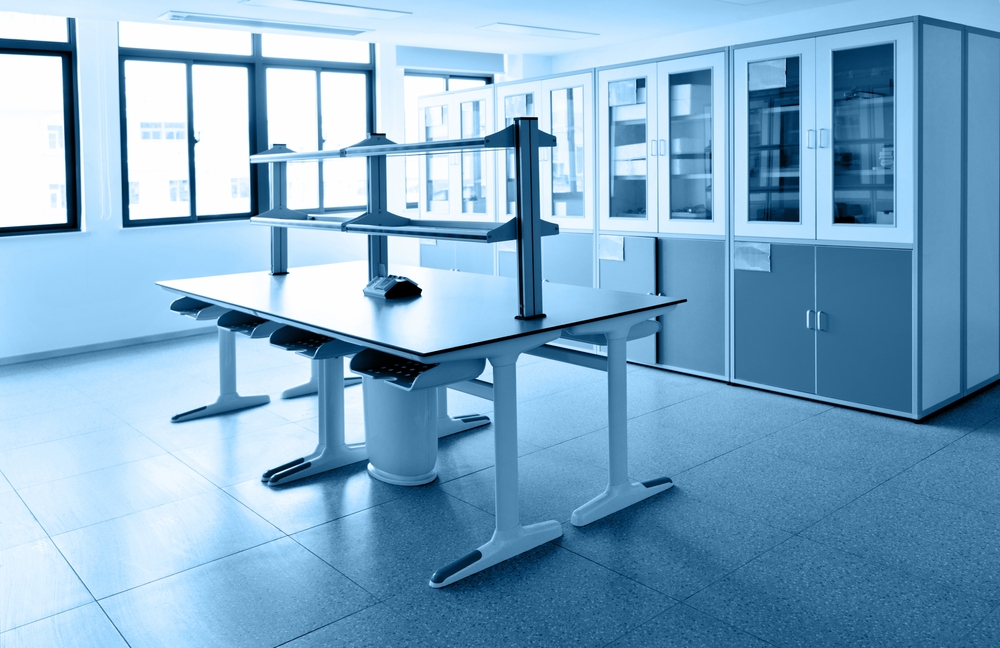
School lab design involves careful consideration of storage to ensure a productive and organized learning environment. Here are some key storage considerations for a school lab:
- Accessibility and Visibility: Opt for open shelving or clear storage containers to make items easily visible.Ensure that frequently used items are easily accessible, while less-used materials can be stored in less accessible areas.
- Versatile Storage Solutions: Use modular and adjustable storage solutions to accommodate various lab equipment and supplies.Consider mobile storage units or carts for flexibility in rearranging the lab space.
- Lab Safety: Store hazardous materials in designated, secure areas with proper ventilation and safety measures.Clearly label storage areas for safety equipment and emergency supplies.
- Organization and Categorization: Group materials logically, considering subjects or types of experiments.Use labels and color-coded systems for quick identification of items.
- Space Efficiency: Maximize vertical space with shelves and cabinets to make the most of the available room.Consider multi-functional furniture that combines storage with work surfaces.
- Durability and Maintenance: Choose storage solutions that are durable and easy to clean, especially in a lab setting where spills may occur.
- Future Expansion: Plan for future growth and changes in curriculum by incorporating flexible storage solutions that can adapt to evolving needs.
- Student Accessibility: Ensure that students can easily access and return materials independently, promoting a sense of responsibility and organization.
7. Surface Material Selection
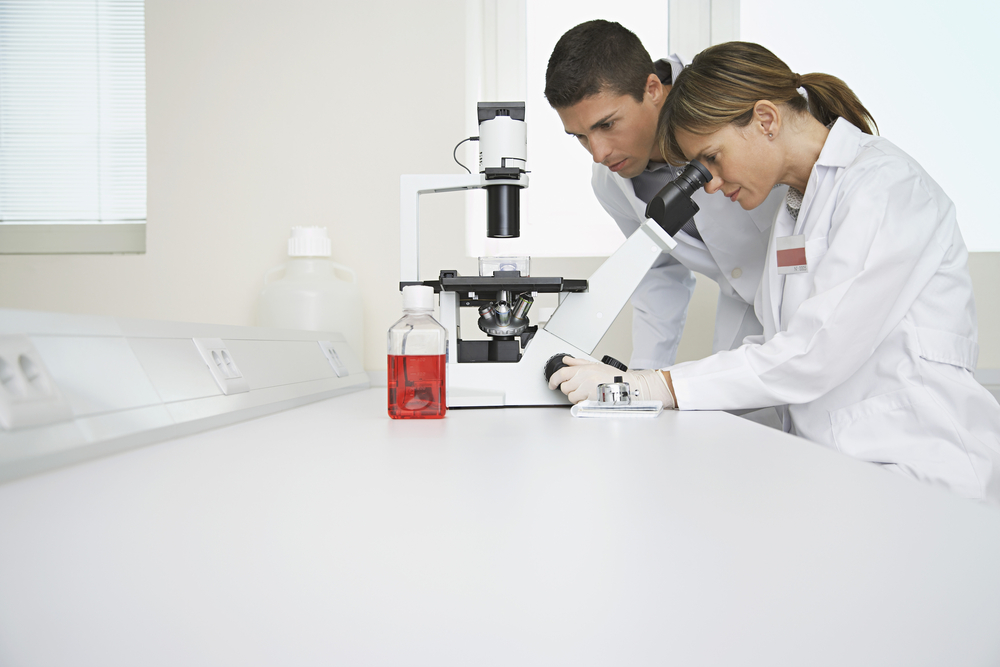
Designing a functional school lab requires careful consideration of various work surface elements. Here are some key considerations:
1. Material Selection:
- Choose durable materials that can withstand the rigors of a school environment.
- Consider chemical resistance if the lab involves experiments with potentially corrosive substances.
- Opt for easy-to-clean surfaces to maintain a hygienic environment.
2. Versatility:
- Ensure the work surfaces are adaptable to different types of experiments and activities.
3. Integration of Technology:
- Provide adequate space for electronic devices, such as laptops, microscopes, or other specialized equipment.
- Incorporate power outlets and data ports into the work surfaces for easy access to technology.
4. Safety Features:
- Ensure work surfaces are designed with safety in mind, considering the nature of experiments conducted in the lab.
- Rounded edges and corners can reduce the risk of accidents.
5. Surface Lighting:
- Incorporate adequate lighting to enhance visibility for detailed work.
- Consider adjustable lighting options to accommodate different experiment requirements.
6. Color and Aesthetics:
- Choose colors that are conducive to a focused and positive learning environment.
- Consider incorporating branding or school colors to create a sense of identity and belonging.
By considering these factors, you can create a school lab with work surfaces that promote engagement, functionality, and safety for both students and educators.
8. Lighting
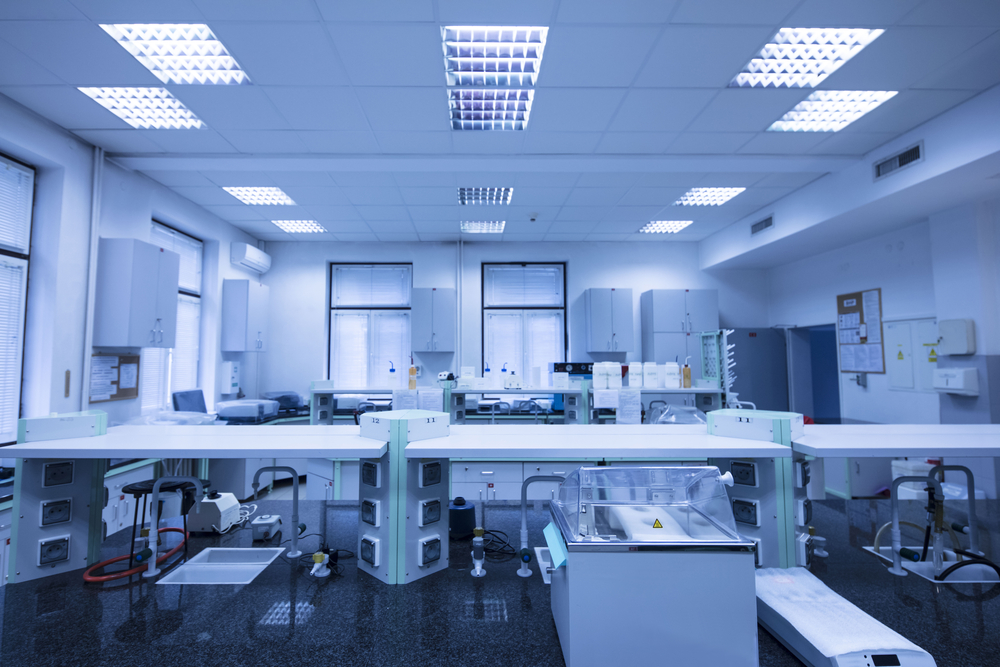
Lighting in a functional school lab requires careful consideration during the design phase, such as the following:
- Natural Light: Maximize the use of natural light to create a bright and inviting atmosphere. Place workstations near windows to take advantage of daylight, which can enhance focus and overall well-being.
- Task Lighting: Ensure proper task lighting at workstations and experiment areas. Use adjustable and focused lighting fixtures to provide ample illumination for specific tasks without causing glare or shadows.
- Color Temperature: Choose lighting with a color temperature that promotes alertness and concentration. Cool white or daylight bulbs (5000-6500 Kelvin) can create a vibrant and energizing environment, whereas warm white (2700-3000 Kelvin) can be used in collaborative or relaxation spaces.
- Flexibility and Controls: Install lighting controls that allow for flexibility based on different activities. Dimmers, zoning, and programmable lighting systems can adapt to various teaching and learning scenarios.
- Uniformity: Aim for uniform lighting throughout the lab to prevent uneven illumination and dark corners. This helps maintain a visually consistent and comfortable environment for students and educators.
- Avoid Glare: Position light fixtures to minimize glare on computer screens, lab equipment, and other reflective surfaces. This helps reduce eye strain and ensures a comfortable working environment.
- Energy Efficiency: Opt for energy-efficient lighting solutions, such as LED fixtures. They save on energy costs and also have a longer lifespan, reducing maintenance needs.
- Emergency Lighting: Incorporate emergency lighting systems to ensure safety during power outages or emergencies. This is crucial in laboratories where precision and safety are paramount.
- Lighting for Display: If the school lab design includes areas for displaying projects or showcasing experiments, use accent lighting or track lighting to draw attention to these areas.
- Compliance with Standards: Ensure that the lighting design complies with relevant safety and ergonomic standards. This includes proper illumination levels and lighting that supports the visual tasks performed in the lab.
By carefully considering these lighting aspects, you can create a school lab that meets functional requirements and fosters an engaging and conducive learning environment.
7. Interactive Displays
Enhance students’ experiences by including interactive display areas in the school lab design. Such areas can showcase students’ work, projects, and experiments, and serve as bulletin boards or digital displays to communicate important information and updates.
Here are some key considerations for creating an effective interactive display area in a school lab:
- Purpose and Learning Objectives: The first step is to define the purpose of the interactive display area and align it with the learning opportunities and objectives of the lab. Ensure that the content displayed supports the educational goals.
- Placement and Visibility: Choose an optimal location for the interactive display area, ensuring that it is easily visible to all students. Consider factors such as room layout, traffic flow, and the size of the lab.
- Interactive Technologies: Incorporate interactive technologies such as touchscreens, interactive whiteboards, or projectors. These tools can enhance engagement and facilitate collaborative learning.
- Multimedia Elements: Integrate multimedia elements, including videos, simulations, and interactive software. This can provide a dynamic and engaging learning experience, catering to different learning styles.
- User-Friendly Interface: Design a user-friendly interface that is intuitive for both teachers and students. Consider ease of navigation and accessibility features to accommodate diverse user experiences and needs.
- Flexibility and Customization: Allow for flexibility in content updates and customization. This ensures that the interactive display area can adapt to evolving educational needs and accommodate different subjects or projects.
- Collaboration Spaces: Create collaborative spaces around the interactive display area. This can encourage teamwork and group activities, fostering a more interactive and participatory learning environment.
8. Collaborative Spaces

Create a space that encourages student participation and ownership. Preferably in proximity to interactive display areas where students showcase their projects and experiments, and serve as bulletin boards.
- Design comfortable and inviting spaces for learners to relax and collaborate outside of structured activities.
- Involve students in the design process to understand their needs and preferences. Incorporating their input and preferences can create a space that resonates with them.
- Remember that ongoing feedback and evaluation from both students and educators will help in refining and improving the school lab design over time.
- Design those areas to also accommodate group work and collaborative projects.
- Include informal meeting areas for discussions and brainstorming sessions.
- Include movable furniture to adapt the space based on the needs of different activities.
- Consider the acoustics in each zone to prevent noise interference between groups.
9. Incorporate Green Spaces
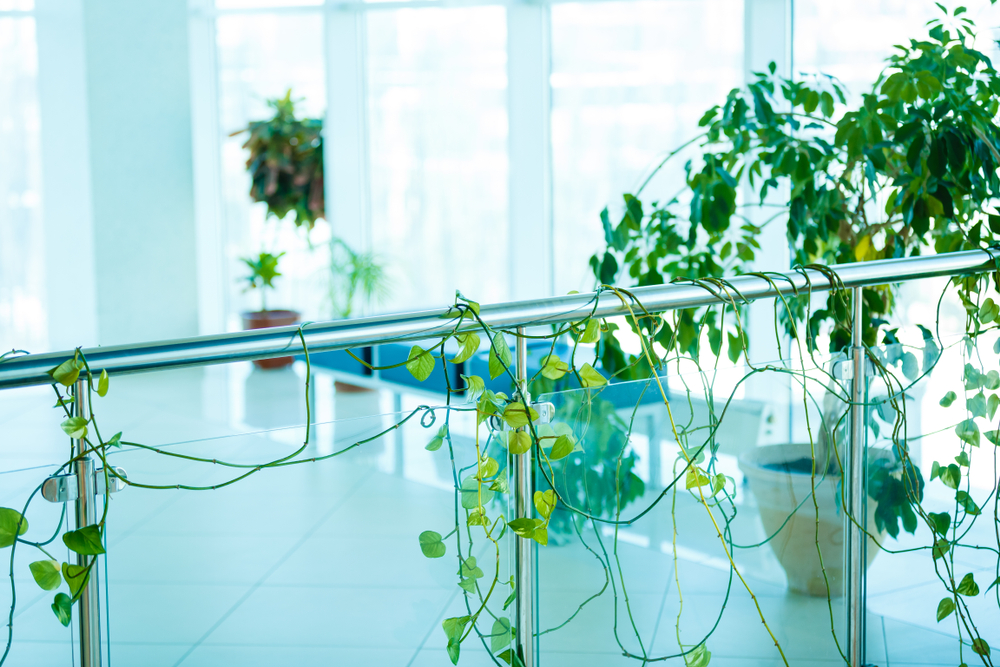
Designing an engaging and functional school lab with sustainability and green space considerations involves incorporating eco-friendly practices and creating a conducive learning environment.
- Integrate plants or other green elements to create a more vibrant and inspiring atmosphere. Biophilic elements are professed to enhance creativity, reduce stress, and improve air quality.
- Consider implementing sustainable practices, such as energy-efficient lighting and recycling stations.
Conclusion
In the quest to prepare and support students for a future defined by innovation, adaptability, and interdisciplinary collaboration along with invaluable laboratory experience, the design of school labs emerges as a critical factor.
As we conclude our exploration into the nuances of 21st-century school lab design, it becomes evident that these spaces transcend traditional boundaries, becoming dynamic environments where curiosity is nurtured, and skills for the future are honed. Be it for elementary school or high school students.

Genie Scientific, with its expertise in designing and equipping labs, stands at the forefront of this educational evolution, empowering institutions to provide students with an immersive and forward-thinking learning process.
Together, let us continue to embrace innovation in education, ensuring that the labs of today lay the foundation for the leaders, scientists, and creatives of tomorrow.

